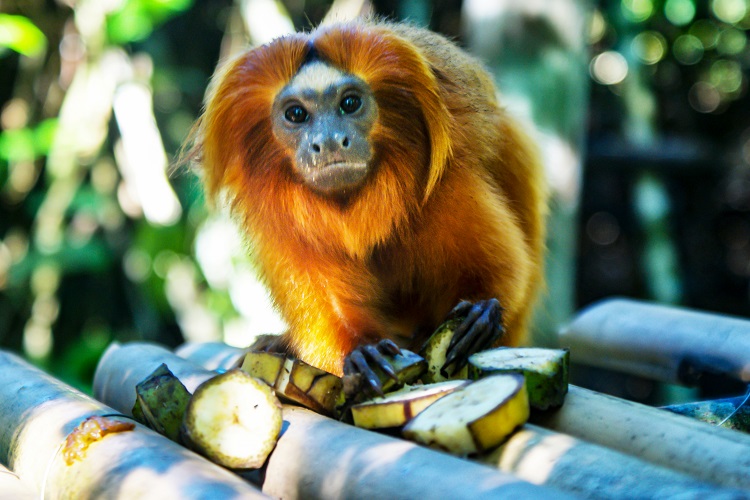Golden lion tamarins play safe with food

Golden lion tamarin monkeys take the safe option when choosing what to feed their young, just like humans do, researchers at the University of St Andrews have discovered.
Part of the Callitrichid primate family, the golden lion tamarin was found by researchers to select foods they already knew to be safe to their young.
When offered new or novel foods, the primates were more cautious – only offering it when they were sure it was edible. The paper is published in Primates and available online.
Lead researcher Camille Troisi, of the Centre for Social Learning and Cognitive Evolution in the School of Biology at the University of St Andrews, said: “Food transfers are more successful if the donor has tried the food before. This could be either to make sure the food they are transferring to another individual is eatable, i.e., nutrition, or that they are transferring appropriate information, i.e., teaching.”
Callitrichidae are a unique primate family, not only in terms of the large number of food transfers to juveniles, but also for the prevalence of transfers that are initiated by the adults.
During food transfers, adults can provide nutrition to young ones, but also information about food. Based on work in captivity, it has been hypothesised that, as well as provisioning infants, food transfers in Callitrichids might function to teach juveniles what food to eat.
Teaching, where an individual enhances the learning of another individual, at a cost, or no direct benefit to themselves, is a central aspect of human culture. However, there are few examples of teaching in other species.
In this latest study, the researchers introduced different types of food (some familiar, some novel) to wild groups of golden lion tamarins. While novel foods were not more successfully transferred than familiar food in the experiment, transfers were more successful (i.e., the receiver obtained food) when the donor had previous experience with that food, suggesting that individuals check whether food is eatable before transferring them to other group members. This is consistent with both the role of food transfers as providers of information and nutrition.
Moreover, the research team found evidence that social learning plays an important role in the development of young tamarins’ foraging preferences: food transfers were an important predictor of a juvenile’s future foraging choices. This is consistent with the role of food transfers as providing information.
Camille added: “If food transfer in golden lion tamarins has a teaching function, we would expect transfers of novel food to be more successful than transfers of familiar food, since this would provide an opportunity to the individual that receives the food to learn about what to eat.
“We would also expect juveniles to learn about foods from those transfers. Overall, there is little clear evidence for teaching in the context of food transfers in golden lion tamarins, but it cannot be ruled out. Social learning, on the other hand, seem to play an important role in the development of young golden lion tamarins’ food preferences.”
Category Research